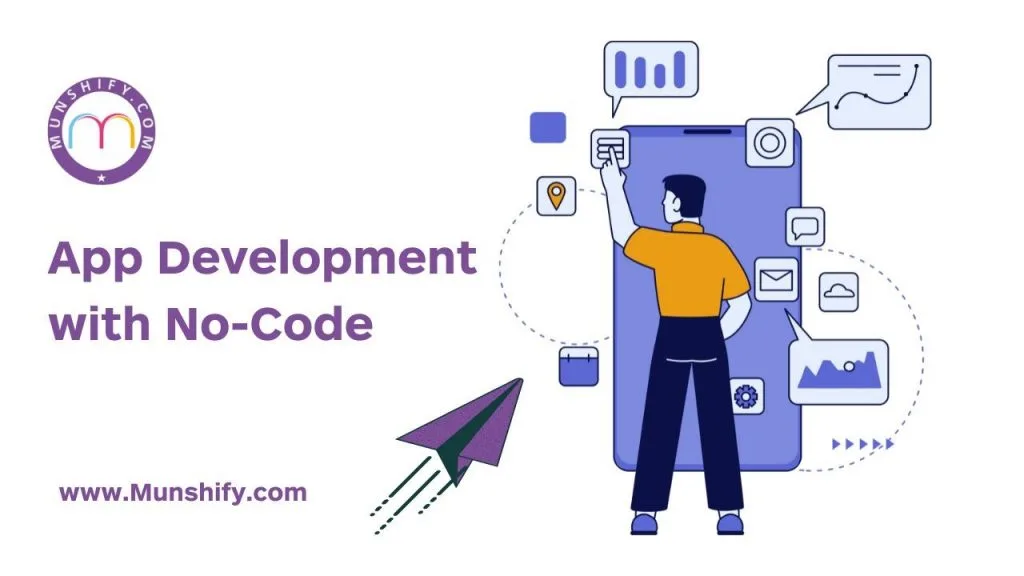The tech world has lately been buzzing with a fresh trend: No-Code Development. It is changed how we design software and apps, catching the eye of everyone from startups to big business. But what is No-Code Development? How does it stand apart from the usual ways? Let us dive into this inventive method and what it means for us.
Table of contents:
- What is No Code Development?
- Low Code VS No Code
- What Does a No-Code Developer Do ?
- How to Build an Application with No-Code?
- Is No Code Development the Future?
What is No Code Development?
No-code development changes how we make software. By using simple, straightforward drag-and-drop options rather than hard-to-learn programming languages. With this, people at any skill level can turn their ideas into reality on the web. This includes starting a new business, growing an online group, or speeding up the business process. While you need some background in coding for low-code development, no-code systems are for everyone. No-code is not there to replace traditional coding; rather, it supports it. It helps seasoned coders do more, quicker, and lets those without any coding experience create solid applications instantly. To put it simply, no-code development is a major shift. It is changing how businesses work online, fostering creativity, quickening digital change, and playing a key role in what the future of app development looks like.
Low Code VS No Code
When making apps, Low-Code and No-code tools can help. They are different though. No-code tools are simple drag-and-drop. They are perfect for people who do not know much about coding; Low-Code tools still need a bit of coding. But the cherry on top? They let you customize more things. Low-Code tools even have two cool features: they let you control the guts of projects and how they act, so you have the reins. Knowing these differences is important to pick the right one. Go for No-code when you want things easy and friendly; if you need to tweak more stuff, pick Low-Code.
Know more about – Low code vs No code
What Does a No-Code Developer Do ?
A no-code developer is like a digital builder. They use no-code platforms to make software apps without usual coding. Think of them as using a visual “if A, then B” approach to get a computer to do what it wants, bypassing tricky code. The name “no-code” might be a bit confusing because there is code involved, but it is made simple with user-friendly interfaces and data handling from no-code tool makers. These developers use visual tools, just like in low code development, to plan out how their software will work before any coding starts. This method makes developing faster and smoother, even testing or launching applications. Imagine a no-code developer as a digital constructor, using these features to turn thoughts into reality and speed up the process of creating software for individuals and businesses.
How to Build an Application with No-Code?

- Design and Customize Appearance: Now-Code platforms offer extensive customization options for the look and feel of your application. Users can tailor themes, colors, logos, fonts, and icons to align with their branding and marketing strategies effortlessly.
- Configure Content: Preconfigured content templates provided by Now-Code platforms enable users to easily customize and populate their applications with relevant content. Editing, adding, or removing content is intuitive, allowing for seamless adjustments to meet specific requirements and preferences.
- Deployment and Launch: Once the application’s appearance and content are finalized, users can proceed to deploy and launch their creations to the world. With Now-Code platforms, the deployment process is streamlined, allowing users to announce their apps’ availability and begin utilizing them promptly.
Learn how to develop apps effortlessly through Low-Code and No-code platforms by exploring our blog – Click here
Is No Code Development the Future?
Look out, because No-code development is on the rise! Business folks want it now more than ever, even outpacing what IT departments can provide. This means there are more and more regular employees, especially those working remotely, who are developing their own apps. But the future for purely No-code apps? It is a bit fuzzy. The battle between Low-Code and No-code platforms heats up as both shift and change. Many Low-Code platforms now have No-code bits included, and some No-code vendors even let you tweak things with code like JavaScript. The development world is now a buffet: citizen development, robotic process automation, and more. As everything keeps changing, No-code development gets ready to step up to the plate. Oh yes, No-code is poised to make big waves in sparking innovation and satisfying hunger for digital solutions.
No-code development represents a significant evolution in the way we conceive, create, and deploy software applications. By empowering individuals with diverse backgrounds to participate in the development process, it democratizes access to technology and fosters innovation. While it may not replace traditional coding entirely, it offers a powerful alternative for rapidly building and iterating on digital solutions. As organizations continue to embrace digital transformation, No-code development is poised to play a pivotal role in shaping the future of software development.
In conclusion, No-code development holds immense promise for organizations looking to streamline their development processes, empower their teams, and stay ahead in today’s rapidly evolving digital landscape.



